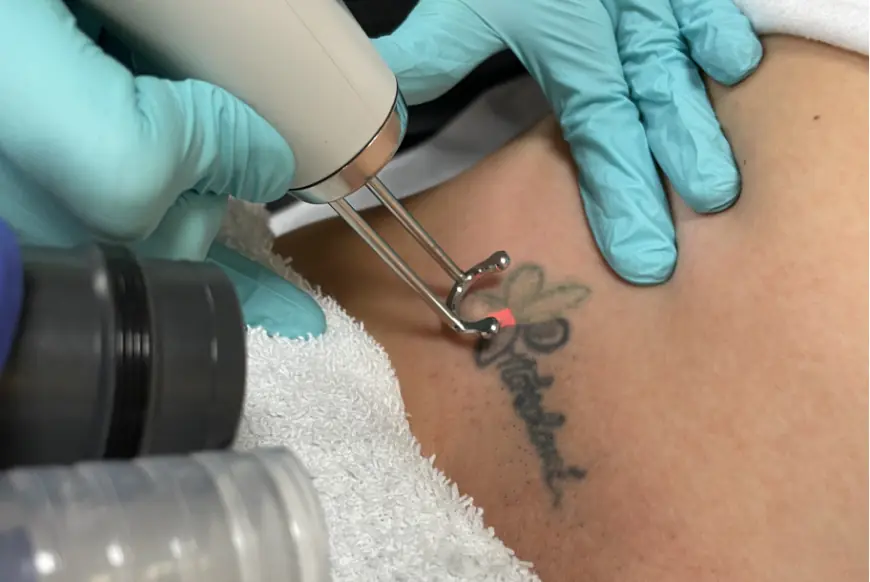Laser Tattoo Removal: Long-Term Effects Explained
Say goodbye to unwanted tattoos with laser tattoo removal in Dubai Enjoy a safe solution at an affordable price, and unwanted results.

Laser tattoo removal has become a widely accepted and effective method for erasing unwanted ink from the skin. Utilizing advanced laser technologies, the treatment works by breaking down tattoo pigments into smaller particles that the body gradually eliminates through its immune system. While the procedure is non-invasive and has a solid safety track record, it's essential to consider the long-term effects it may have on the skin and body. Understanding these effects helps individuals make informed decisions about the treatment and what to expect years after the sessions are completed.
Skin Texture Changes Over Time:
One of the most common concerns regarding Laser Tattoo Removal in Dubai (إزالة الوشم بالليزر في دبي) is how it impacts the skin's texture in the long run. For most people, the skin returns to a nearly normal state once the removal is complete. However, in certain cases—especially when multiple high-intensity sessions are involved—subtle changes may occur. These changes might include mild thickening, slight scarring, or a change in how the skin reflects light. Factors such as skin type, the depth of the tattoo, and aftercare routines all influence how the skin heals and whether it retains a consistent texture over time.
Hypopigmentation and Hyperpigmentation:
A key long-term effect of laser tattoo removal is changes in skin pigmentation. Hypopigmentation (lightening of the skin) can happen when the laser affects the melanin, making the treated area appear paler than the surrounding skin. Conversely, hyperpigmentation (darkening of the skin) may occur in individuals with darker skin tones as a response to laser-induced inflammation. These pigmentation changes are often temporary but can persist for months or, in rare cases, become permanent. Proper post-treatment care and sun protection significantly reduce these risks over time.
Risk of Permanent Scarring:
While laser tattoo removal is designed to be gentle on the skin, there is a small possibility of scarring, particularly in individuals prone to keloids or hypertrophic scars. Scarring is more likely if the skin is not properly cared for after treatment or if the tattoo was previously scarred during the original inking. Over the long term, these scars may flatten and fade but can remain visible depending on the individual’s healing response. Choosing appropriate aftercare and avoiding scratching or picking at treated areas minimizes scarring risk considerably.
Immune System Engagement and Long-Term Effects:
Laser tattoo removal relies heavily on the body’s immune system to eliminate ink particles after they are shattered by the laser. This ongoing engagement with the lymphatic system and immune pathways means that pigment particles—especially from older or larger tattoos—can remain in the body for an extended period before being completely flushed out. While no definitive evidence suggests long-term harm from this process, ongoing studies are exploring whether certain ink components might accumulate in lymph nodes or other tissues. At present, most findings indicate that the immune system safely handles this clearance without lasting negative effects.
Changes in Skin Sensitivity:
Long after the tattoo has faded, some individuals report lingering changes in skin sensitivity in the treated area. This may include increased sensitivity to touch, temperature fluctuations, or even reduced sensation in rare cases. These outcomes are more often linked to aggressive treatments or repeated laser exposure in a small region. Over time, many of these sensory changes diminish, but some people experience a permanent, albeit mild, difference in how the area feels compared to untreated skin.
Impact on Future Tattooing:
An often-overlooked aspect of laser tattoo removal is how it affects the skin's ability to accept new ink in the future. If a person wishes to get a new tattoo over a previously treated area, they may find that the skin behaves differently during and after the new inking process. The ink may settle less evenly, or the skin might react more sensitively. While this does not prevent new tattoos from being applied, it does suggest that careful planning and evaluation are needed before re-tattooing over previously lasered skin.
Emotional and Psychological Aftereffects:
Beyond the physical impacts, laser tattoo removal can have long-term emotional and psychological effects. For many, removing a tattoo can bring closure or relief, particularly when the tattoo is linked to a past identity, mistake, or traumatic event. Others may feel regret if the removal doesn’t yield perfect results or leaves behind subtle reminders like ghosting or light scarring. These emotional outcomes vary from person to person and can evolve over time, making psychological readiness an important part of the tattoo removal journey.
Conclusion:
Laser Tattoo Removal in Dubai (إزالة الوشم بالليزر) is a powerful and generally safe method for erasing unwanted ink, but it’s not without its long-term effects. From skin texture changes and pigmentation shifts to potential immune involvement and emotional impacts, the process can leave lasting impressions—both physically and mentally. However, most people experience positive outcomes with minimal adverse effects when they follow proper aftercare, understand the risks, and approach the treatment with realistic expectations. Being informed is key to achieving the best long-term results and maintaining healthy, confident skin.
What's Your Reaction?
 Like
0
Like
0
 Dislike
0
Dislike
0
 Love
0
Love
0
 Funny
0
Funny
0
 Angry
0
Angry
0
 Sad
0
Sad
0
 Wow
0
Wow
0



















































